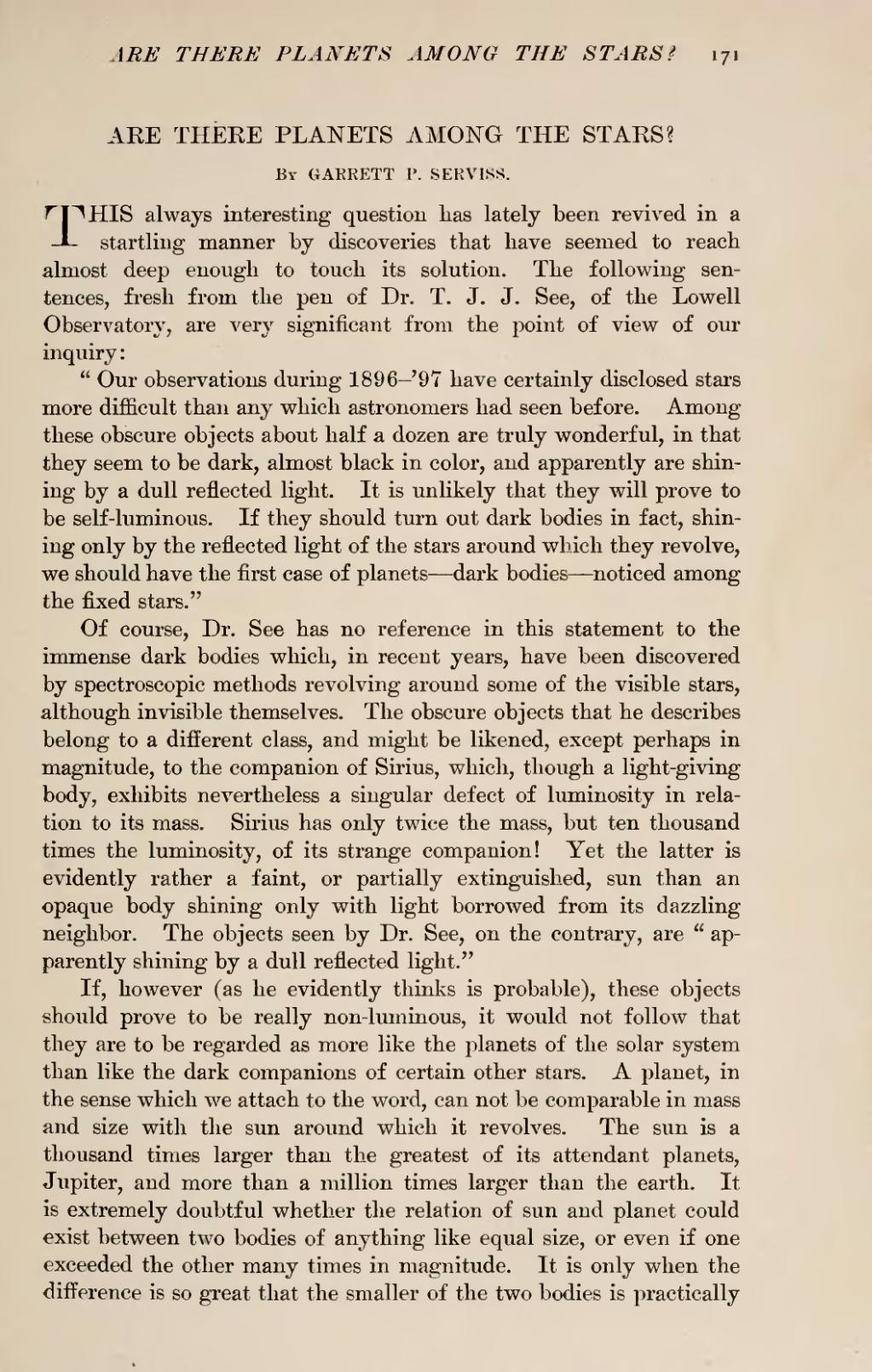| ARE THERE PLANETS AMONG THE STARS? |
By GARRETT P. SERVISS.
THIS always interesting question has lately been revived in a startling manner by discoveries that have seemed to reach almost deep enough to touch its solution. The following sentences, fresh from the pen of Dr. T. J. J. See, of the Lowell Observatory, are very significant from the point of view of our inquiry:
"Our observations during 1896-'97 have certainly disclosed stars more difficult than any which astronomers had seen before. Among these obscure objects about half a dozen are truly wonderful, in that they seem to be dark, almost black in color, and apparently are shining by a dull reflected light. It is unlikely that they will prove to be self-luminous. If they should turn out dark bodies in fact, shining only by the reflected light of the stars around which they revolve, we should have the first case of planets—dark bodies—noticed among the fixed stars."
Of course, Dr. See has no reference in this statement to the immense dark bodies which, in recent years, have been discovered by spectroscopic methods revolving around some of the visible stars, although invisible themselves. The obscure objects that he describes belong to a different class, and might be likened, except perhaps in magnitude, to the companion of Sirius, which, though a light-giving body, exhibits nevertheless a singular defect of luminosity in relation to its mass. Sirius has only twice the mass, but ten thousand times the luminosity, of its strange companion! Yet the latter is evidently rather a faint, or partially extinguished, sun than an opaque body shining only with light borrowed from its dazzling neighbor. The objects seen by Dr. See, on the contrary, are "apparently shining by a dull reflected light."
If, however (as he evidently thinks is probable), these objects should prove to be really non-luminous, it would not follow that they are to be regarded as more like the planets of the solar system than like the dark companions of certain other stars. A planet, in the sense which we attach to the word, can not be comparable in mass and size with the sun around which it revolves. The sun is a thousand times larger than the greatest of its attendant planets, Jupiter, and more than a million times larger than the earth. It is extremely doubtful whether the relation of sun and planet could exist between two bodies of anything like equal size, or even if one exceeded the other many times in magnitude. It is only when the difference is so great that the smaller of the two bodies is practically
